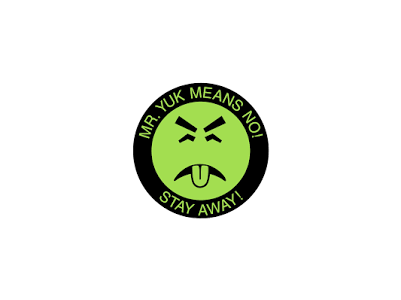Gregory A. Wilson, MD was in the middle of his fellowship (today’s equivalent of being a third year resident) within the department of Pediatrics, when he noted Indiana needed a major change. In 1977, the Indiana Poison Center was housed in Wishard Hospital and the doctors on call only had a few books on toxicology and a microfiche system to answer the questions coming in. Wilson knew that something had to change in order to keep Indiana residents happy and healthy.
While reflecting on his internship in Rochester, New York, Wilson found himself unsettled about the stark differences between the New York based Poison Center and the few toxicology books that made up Indiana’s Center. While discussing his concerns with Carolyn Cunningham, MD, they decided to request William Paynter, MD to help address this deficiency.
In partnership with Hook’s Drugs and (Anthem) Blue Cross Blue Shield, Wilson and his team were able to raise $100,000 for Indiana to implement their own “Mr. Yuk” poison prevention program. Wilson recalled that “Mr. Yuk” stickers were an overwhelming success in New York and worked with his sponsors to print 3 million stickers to be distributed across the state. This poison prevention program was the start of securing consistent funding for the Poison Center.
Wilson truly took his own advice, “never complain about anything unless you’re willing to make it change” and ran with it. Wilson served as the medical director of the Indiana Poison Center until 1983. He has since worked as a public health pediatrician in Appalachia, director of the Pediatric Intensive Case Management Program at Wishard Memorial Hospital, section director of Developmental Pediatrics at Riley Hospital, co-founder of the Riley Robotic Rehabilitation Center, and served as president of the Indiana Chapter of the American Academy of Pediatrics. In 2001, Wilson went on to be named the State Health Commissioner at the Indiana State Department of Health, where he served a four-year term before returning to the IU faculty. Wilson also self-published a book, “All Children Have Rights: Giving the world’s most important people their rights; Poems, reflections and Facts” based on the patient stories are based on his clinical experiences at Indiana University School of Medicine, Wishard Memorial Hospital, and at the Riley Children’s Hospital.
Before the Indiana Poison Center was established, there were 300-400 poison deaths in children annually in the nation. “Only about 20 percent of all poisonings actually need emergency room treatment,” said Wilson. Now, the Center's resources include a 70,000-card file system, the Poisindex microfilm system, a resource of expert consultants, numerous textbooks and journals with back-up support from the National Poison Center Network.
Author
Salem Padgett
Salem supports the Department of Pediatrics at IU School of Medicine as the Communication Generalist. She helps spread the word about the department through storytelling.
The views expressed in this content represent the perspective and opinions of the author and may or may not represent the position of Indiana University School of Medicine.
